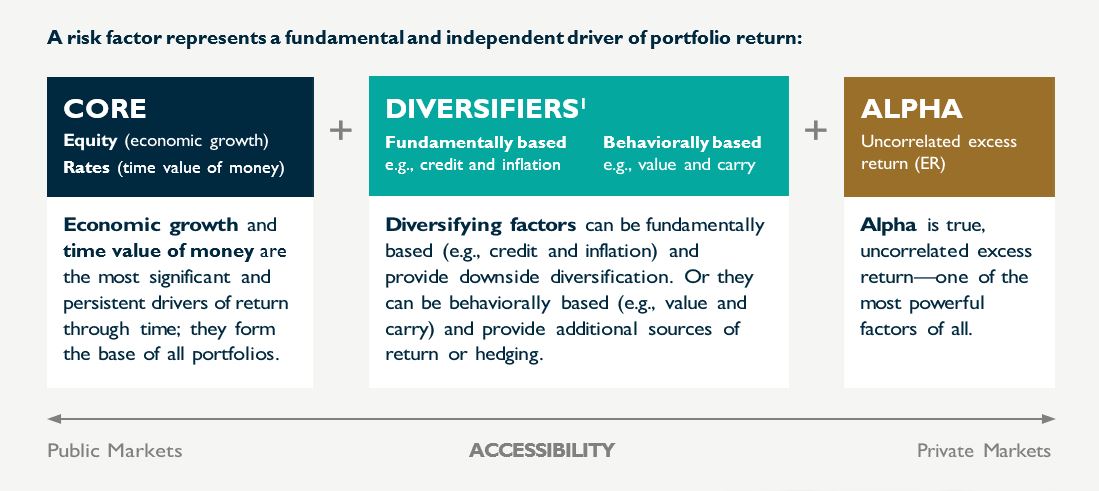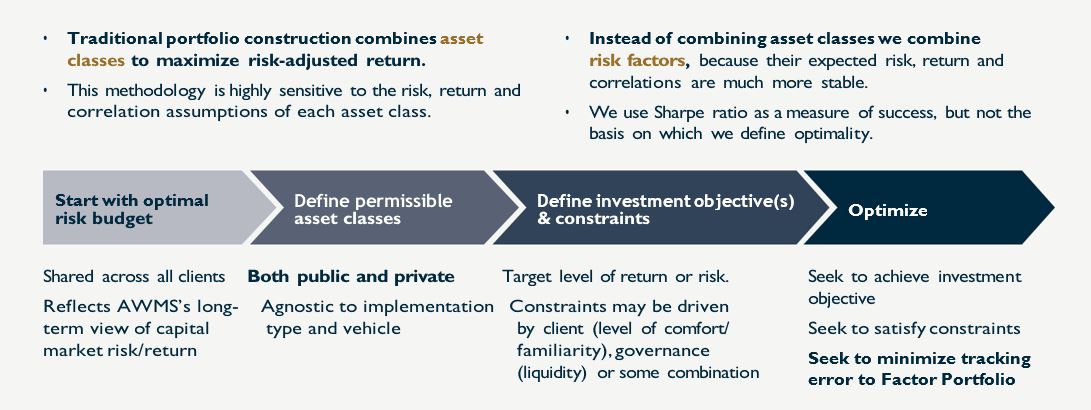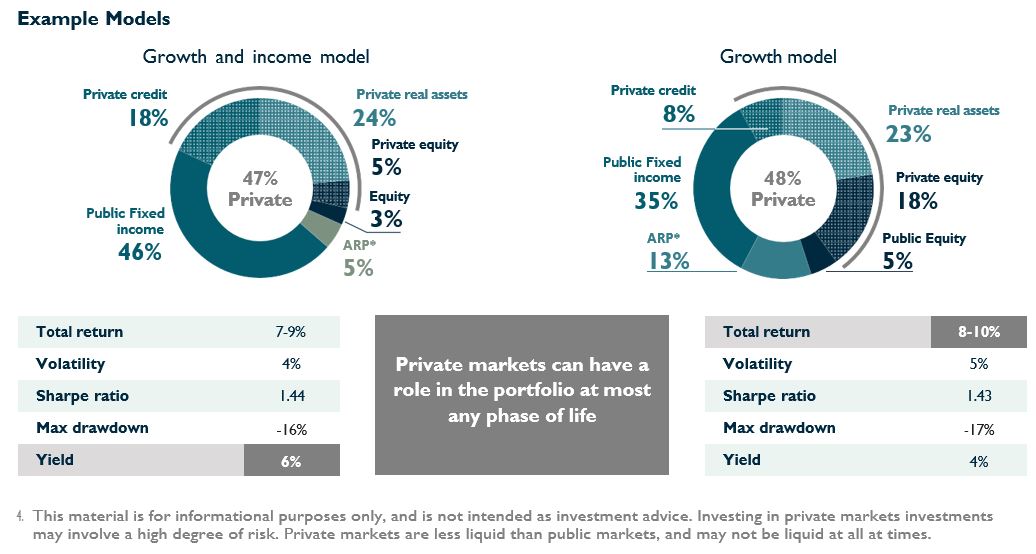[ad_1]
Sponsored by 
Harry Markowitz might not be a family title, however amongst asset allocators he’s the undisputed king. Thought of the daddy of recent portfolio concept (MPT), his foundational work (largely executed within the late Nineteen Fifties–Nineteen Sixties) on multi-asset portfolio building influenced and underpins nearly all fashions in use immediately.
On the coronary heart of MPT is the idea that by combining asset courses that transfer in a different way from one another, we will create a portfolio with a complete threat that’s lower than the sum of its elements. The simplicity of MPT is each its best power and, arguably, its best weak spot. The 60/40 portfolio displays the idea that shares and bonds usually are not extremely correlated over the long run.
This isn’t an unreasonable thesis. Neither is it fallacious, per se. It’s merely extremely depending on the time horizon over which it’s measured and on getting the chance, return and correlation assumptions proper.
The precept has not modified, however each buyers and markets themselves have, necessitating a brand new method to portfolio building.
Out with the outdated: from asset courses to threat elements
Portfolios of the previous, constructed utilizing the guiding ideas of Markowitz’s 60/40, relied closely on returns of public fairness to build up wealth.
Over-reliance on fairness threat is a byproduct of a elementary misunderstanding of the distinction between capital allocation and contribution to threat. Although public equities are 60% of a typical 60/40 portfolio, they contribute a far larger proportion of the portfolio’s threat. Since threat tends to come back together with return, these portfolios have been overwhelmingly depending on public equities for his or her wealth technology.
With the intention to construct a simpler portfolio that takes under consideration the big selection of asset courses obtainable to buyers immediately, we have to look by the lens of return drivers (additionally referred to as “threat elements”) earlier than allocating amongst asset courses.
In with the brand new: risk-based diversification
A 50% allocation to non-public markets just isn’t an arbitrary selection.
It’s the optimum end result of a brand new method.
Each threat issue, much like an asset class, has a corresponding assumed return, threat and correlation. These assumptions are rather more secure than asset class–particular assumptions. Balancing threat elements might help guarantee diversified threat and keep away from unintentional concentrations, most frequently in fairness.
Fifty p.c of this New Reasonable Mannequin is in non-public markets throughout the spectrum of personal fairness, non-public credit score and personal actual belongings.
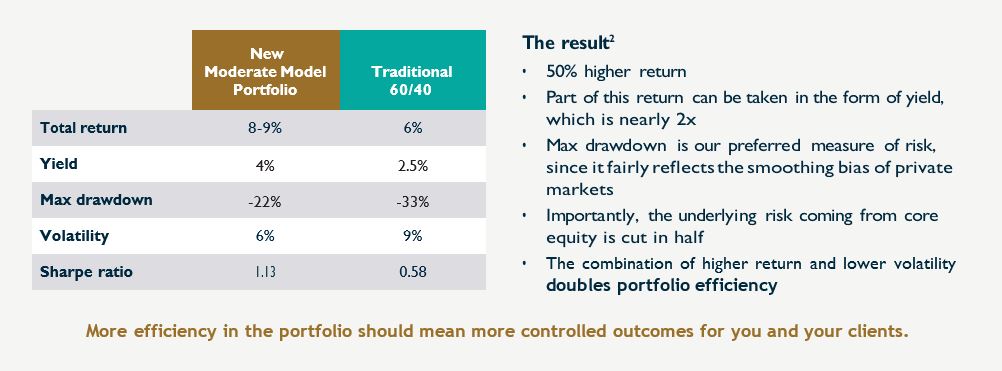
The facility of a 50% allocation to non-public markets is within the traditionally greater returns and fewer and milder drawdowns particularly, almost double the cumulative returns over the previous 20 years and meaningfully fewer drawdowns than the normal 60/40.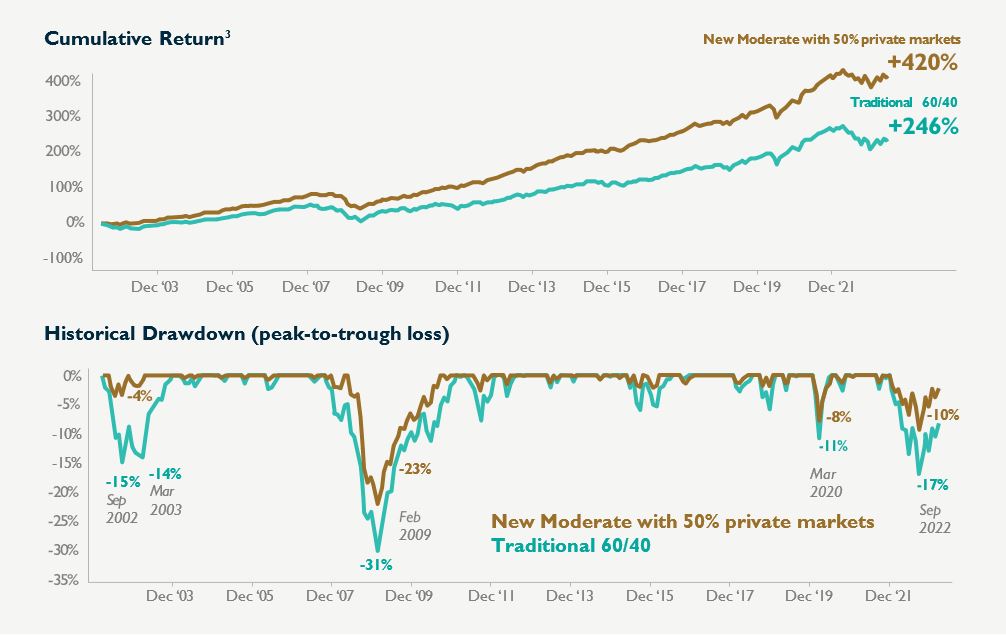
A versatile method that may be adjusted based mostly on shopper targets
Now, this mannequin is engaging in its simplicity and effectiveness. However it’s constructed absent of realizing something about a person shopper. That’s the reason that is greater than only a mannequin—it’s additionally a course of.
And that course of—utilizing risk-based diversification and a concentrate on alpha—could be coupled with your portfolio building course of to create personalized portfolios for various targets and outcomes.
That goals-based portfolio would possibly look one thing like a Development & Earnings portfolio for retirement that emphasizes yield and smoother returns. For this goal, we lean into greater allocations to non-public credit score and public fastened earnings, whereas de-emphasizing equities, each private and non-private.4
Or the specified end result could result in a Development portfolio for longer funding timeframes, maybe for a youthful investor or a basis or endowment with a multiple- decade time horizon. Right here we emphasize greater returns by leaning extra closely on non-public fairness, whereas sustaining the diversification advantages of actual belongings.
Not useless, simply completely different: An advanced method
For all of Harry Markowitz’s brilliance, even he couldn’t totally conceive of the breadth and depth with which capital markets would develop. His fashions of the previous made no try to unravel for personal markets investments—and why would they? On the time, they merely didn’t exist within the type or measurement we see immediately.
When you had been utterly unburdened by and unanchored to portfolios you constructed prior to now, and there have been new instruments that can assist you construct extra intentional and doubtlessly higher outcomes to your purchasers, would you go about it the identical approach you probably did 30 years in the past? Doubtless not. The character of capital markets is altering. In all different elements of our lives we demand extra customization and suppleness. We imagine buyers could be prudent and sensible to demand the identical of their portfolios.
- Diversification doesn’t guarantee revenue or shield towards market loss.
- Primarily based on a hypothetical portfolio over a 20-year interval utilizing index returns. Public fairness represented by MSCI ACWI NTR. Public fastened earnings represented by Bloomberg 7–10-year authorities bond index. Non-public fairness represented by Burgiss Buyout index. Non-public credit score represented by Burgiss 1L index. Actual belongings represented by a 50/50 break up of Burgiss Infrastructure index and NCREIF-NFI ODCE actual property index. Historic efficiency March 2002–March 2023. Previous efficiency isn’t any assure of future returns.
- Previous efficiency doesn’t assure future outcomes.
- This materials is for informational functions solely, and isn’t meant as funding recommendation. Investing in non-public markets investments could contain a excessive diploma of threat. Non-public markets are much less liquid than public markets, and might not be liquid in any respect at occasions.
Disclaimer
Investing in non-public markets includes threat, together with the lack of principal. Different dangers embrace, however usually are not restricted to, illiquidity threat, valuation dangers and plenty of different dangers associated to non-public firms basically.
Monetary advisors should fastidiously contemplate the dangers and different suitability particulars in figuring out acceptable investments for their particular person purchasers’ portfolios.
Information contained herein from third-party suppliers is obtained from what are thought of dependable sources. Nonetheless, its accuracy, completeness or reliability can’t be assured. Examples offered are for illustrative functions solely and never meant to be reflective of outcomes an investor can count on to attain. These supplies could comprise “forward-looking” data that’s not purely historic in nature, and such data contained herein relies upon sure assumptions about future occasions or circumstances and is meant solely for instance hypothetical outcomes underneath these assumptions (not all of which will probably be specified herein).
AccessAres is the thought-leadership and academic division of Ares Wealth Administration Options. The supplies distributed by AccessAres are for informational functions solely and don’t represent funding recommendation or a suggestion to purchase, promote or maintain any safety, funding technique or market sector. Ares Wealth Administration Options is a worldwide model of Ares Administration Company.
REF: AM-02900
[ad_2]


